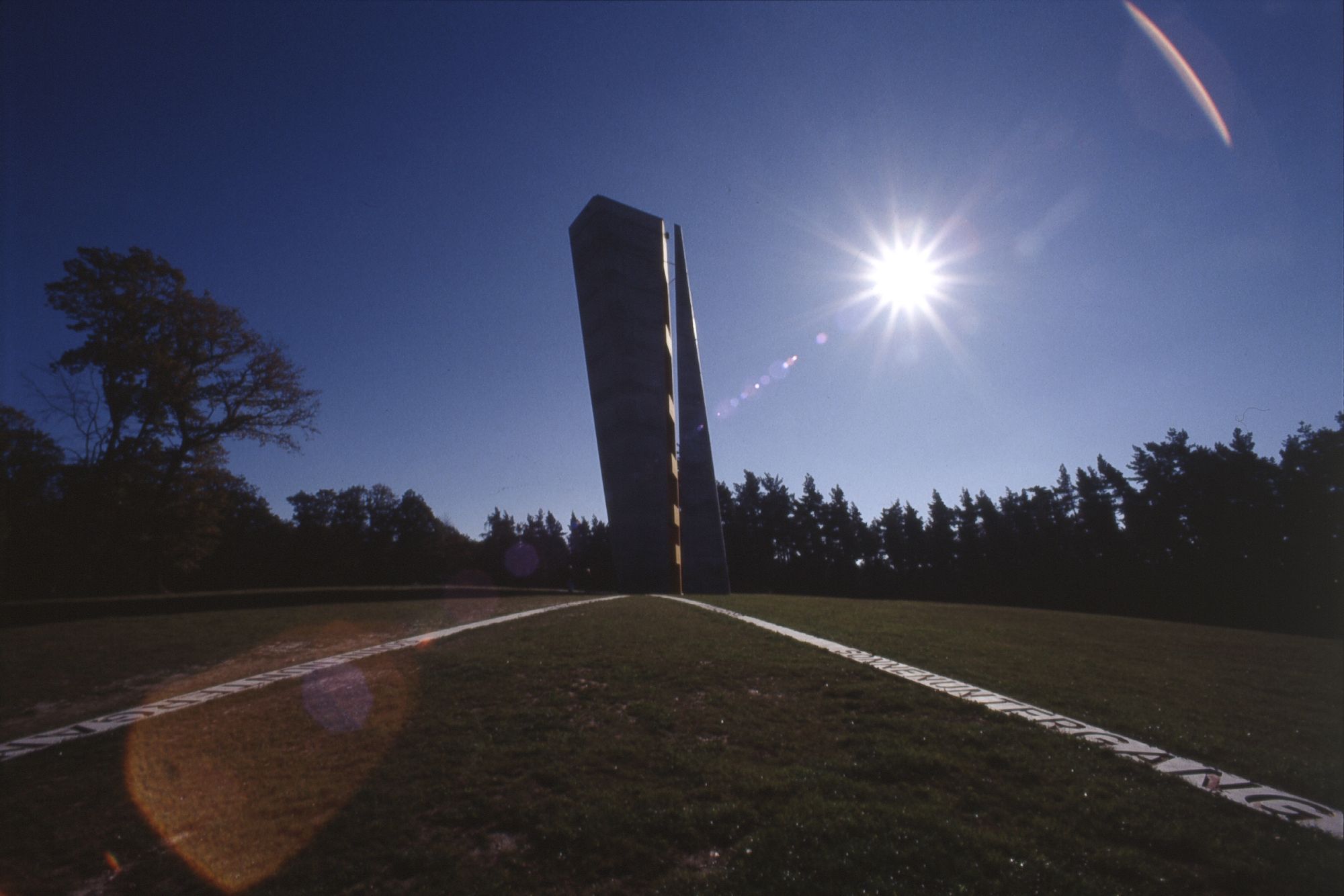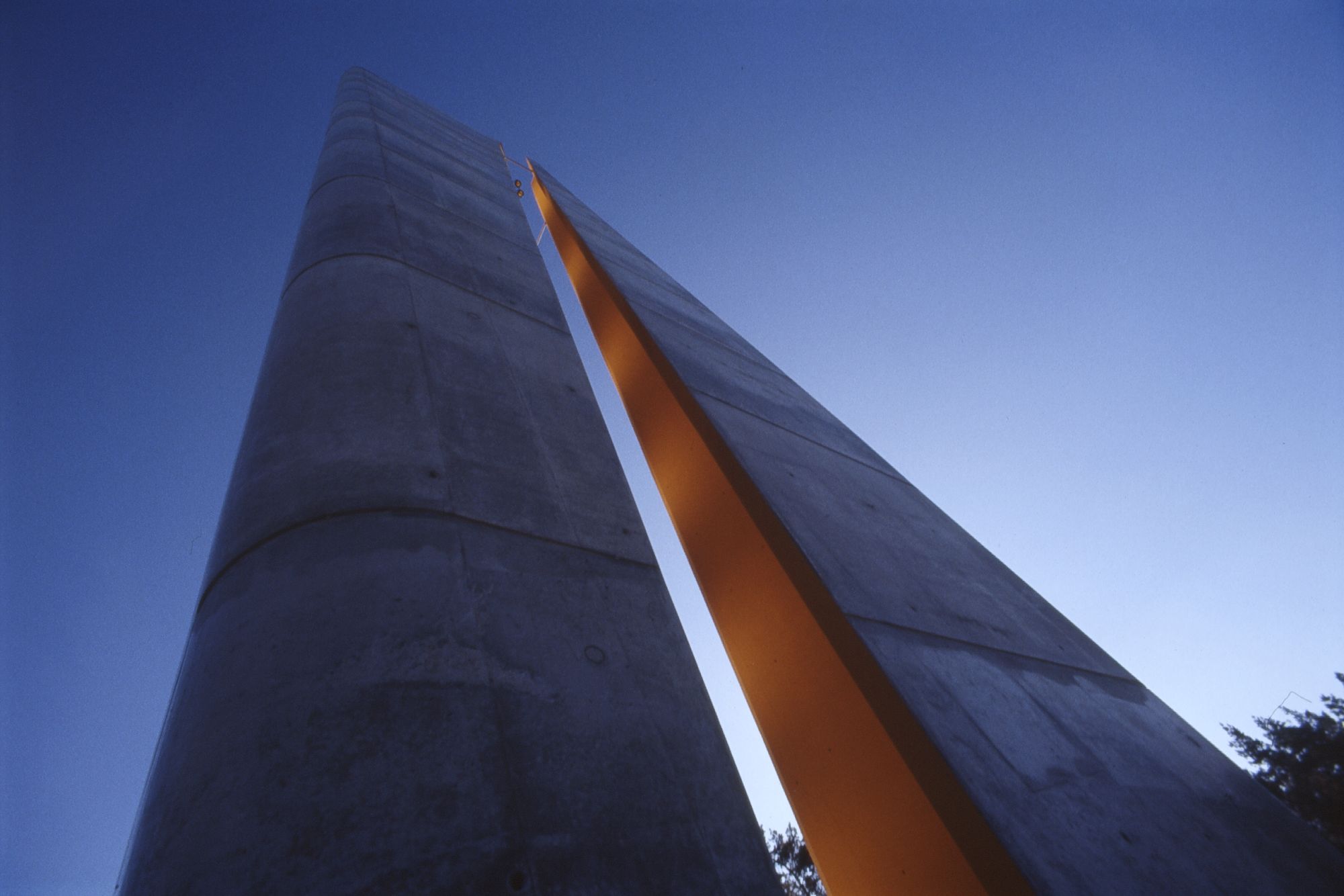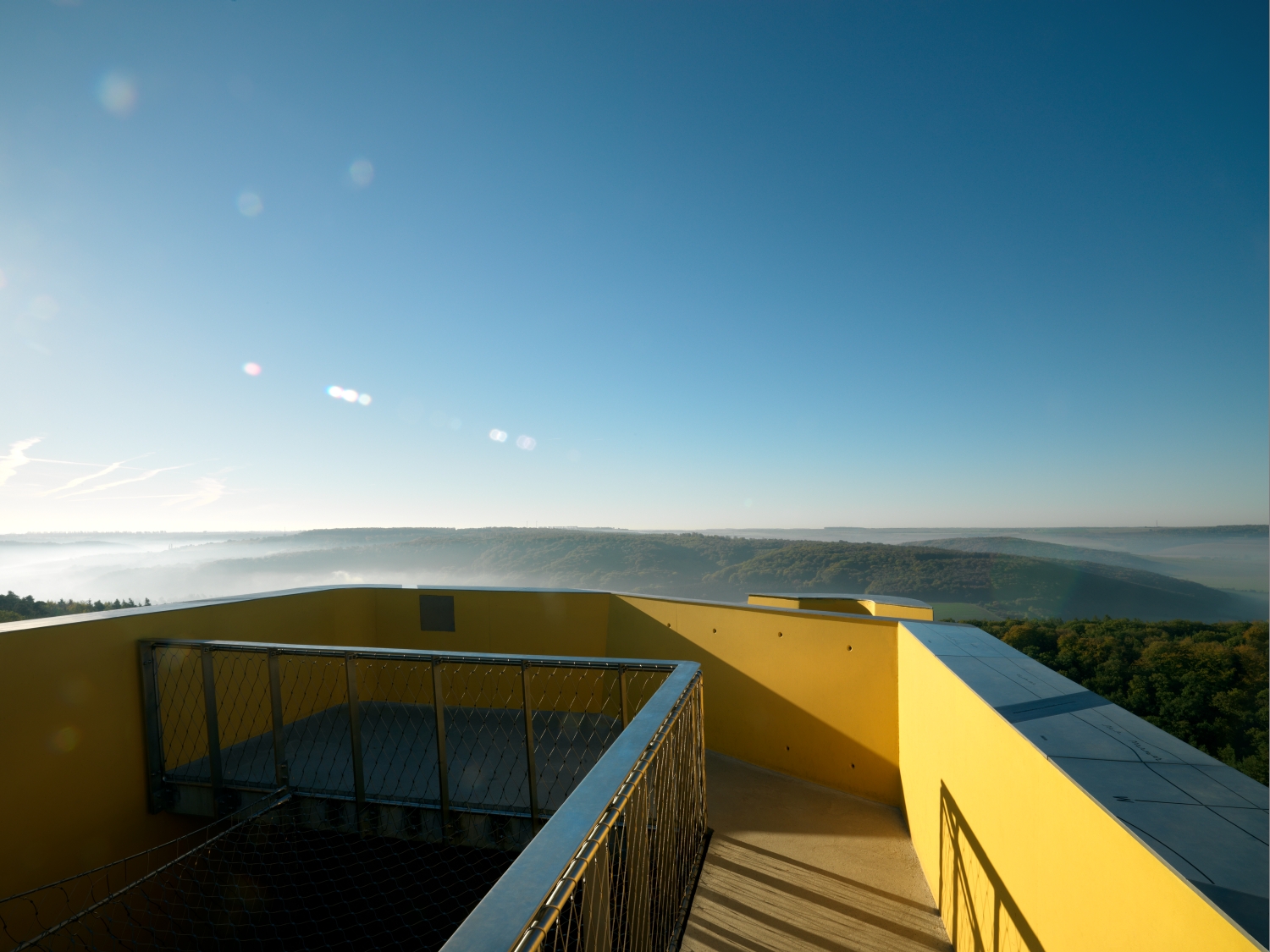
Findspot of the Sky Disc
Mittelberg hill
On the plateau of Mittelberg hill, around 3 km away from the present-day Visitor Centre, the Nebra Sky Disc was discovered in 1999. Its discovery in the middle of thick forest by two illegal excavators was largely thanks to chance. The circumstances of the discovery read like an exciting detective story.
Mittelberg hill, as the findspot of the Disc, therefore has a central role at the Nebra Ark. It can be seen from the Nebra Ark itself – through the panoramic window it can even be seen from the permanent display. Also easy to see from a distance is the Observation Tower, which rises out of the forest and is located in the immediate vicinity of the findspot.
A look in the eye of the sky
The ‘celestial eye’ or ‘eye of the sky’ marks the findspot of the Sky Disc. At the exact point where it was discovered, there is a lightly bent disc of polished stainless steel set into the ground. The view into the ground is at the same time a view into the sky: the ‘eye of the sky’ works as a mirror and joins heaven and earth at the precise point where, for 3600 years, an image of the heavens lay hidden in the ground.
Find-points
In the archaeological investigations on Mittelberg hill from 2002 on, further discoveries were made. The findspots of these discoveries are marked with disks of concrete. In each of these ‘find discs’ the number of the find is engraved. Go treasure hunting! If you picked up one of the little plans lying around in the permanent display at the Nebra Ark, you can write in the find-number on Mittelberg hill. The findspots that you ‘catalogue’ in this way can then later be matched up with the archaeological finds on display at the Nebra Ark.
Ramparts
The plateau of Mittelberg hill is surrounded by an Iron Age circular rampart and two cross-cutting ramparts. The circular rampart from the earlier Iron Age has been reconstructed in part in the form of a grassy earth rampart.
Observation Tower
To gaze at the horizon just as people did at the time of the Sky Disc – a striking Observation Tower near to the findspot makes this possible. It is 30 m high and leans at 10°, making it the pointer in a giant sun dial. A vertical cut divides the building and marks the line of sight to the Brocken mountain, where the sun sets at the summer solstice: this is the spot the Sky Disc fits into place and can be used as a sun calendar.
The sightlines and relationships with specific notable points in the area can be traced by visitors from the Observation Tower – the Kyffhäuser Mountains with the Kulpenberg peak, or the Harz Mountains with the Brocken – are recorded on the plateau of Mittelberg hill by concrete ribbons, around 50 cm wide, with inscriptions set into them. They help the viewer to find these points in the panorama and to trace the celestial observations made in the Bronze Age.



